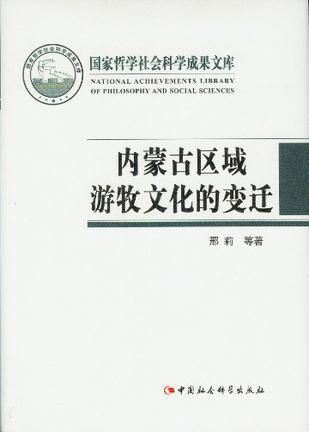Transition process of a nomadic culture

Transitions of the Nomadic Culture in Inner Mongolia
Author: Xing Li, Xing Qi
Publisher: Social Sciences Academic Press (CHINA)
In the 13th century, Mongolians became the rulers of the northern nomadic empire. The nomadic community peaked in the Yuan Dynasty (1279-1368) when bustling cities and courier stations with transport lines extending out in all directions emerged in the prairie. But traditional animal husbandry had not changed. After the founding of the Ming Dynasty (1368-1644), the defeated Mongolian ruling class retreated to the prairie and reverted to their former way of living. The two nations on either side of the Great Wall used the resources available on their own side. Although the Great Wall was rebuilt on a large scale in the Ming Dynasty, boundaries between agriculture and animal husbandry remained blurred. Agricultural society and settlement began to flourish on the northern side of the Great Wall. Therefore, Transitions of the Nomadic Culture in Inner Mongolia chooses the Ming Dynasty as the turning point of the transitions of the Mongolian nomadic culture.
The original reason for building the Great Wall lost its importance as the Qing Dynasty (1616-1911) took power. However, after that, Mongolian society witnessed a strengthened Banner System, a form of military divisions along ethnic lines, along with a strengthened temple economy, business and trade. The society also adopted a lifestyle that was half nomadic, half-agricultural. The development of agriculture and settlements began to gain momentum. From that point until the late Qing Dynasty, the social and economic and the demographic structure of Inner Mongolian society changed dramatically. Integrations and exchanges between agricultural and nomadic cultures have become more frequent and closer. The process progressed through the Republic of China period and continues today. Research of the transition and analysis of the reasons in this period constitute the main body of this book.
The traditional nomadic production mode has lost almost all economic importance in modern society. Modern farm management patterns featuring herdsmen settlements and livestock captivity considerations are showing promising prospects. In response, nomadic culture is losing its traditions and development base due to its divorce with the former “human-prairie-livestock” symbiosis model.
How did this transition happen? Agricultural development and prairie mineral exploitation are not enough to explain this phenomenon. In fact, it is impossible for a totally closed society to avoid environmental change, leading to issues in the social economy and culture. After thousands of years of comprehensive interaction between agricultural and nomadic culture, the northern prairie was no longer an isolated society. Meanwhile, the mobility of a nomadic community is essentially open.
Cultural transition is the universal law. The transitional process includes decline, transformation, innovation and development. This book by Xing Li and Xing Qi introduced the transformation of the nomadic mode of living by illuminating the changes seen in folk cultural including languages, folk religions, festivals and martial customs.
